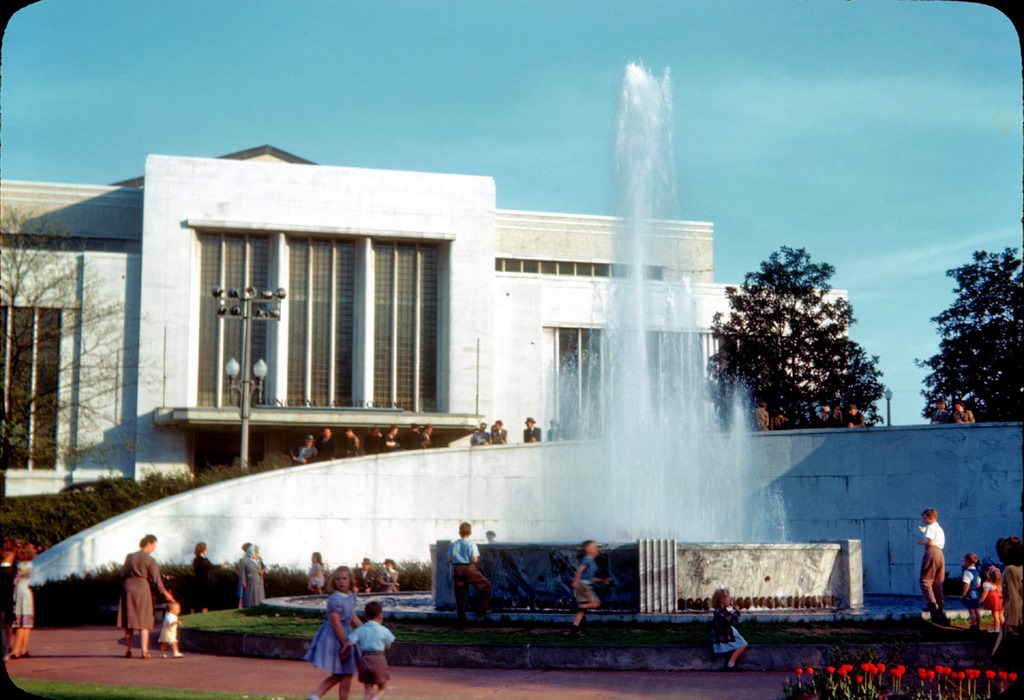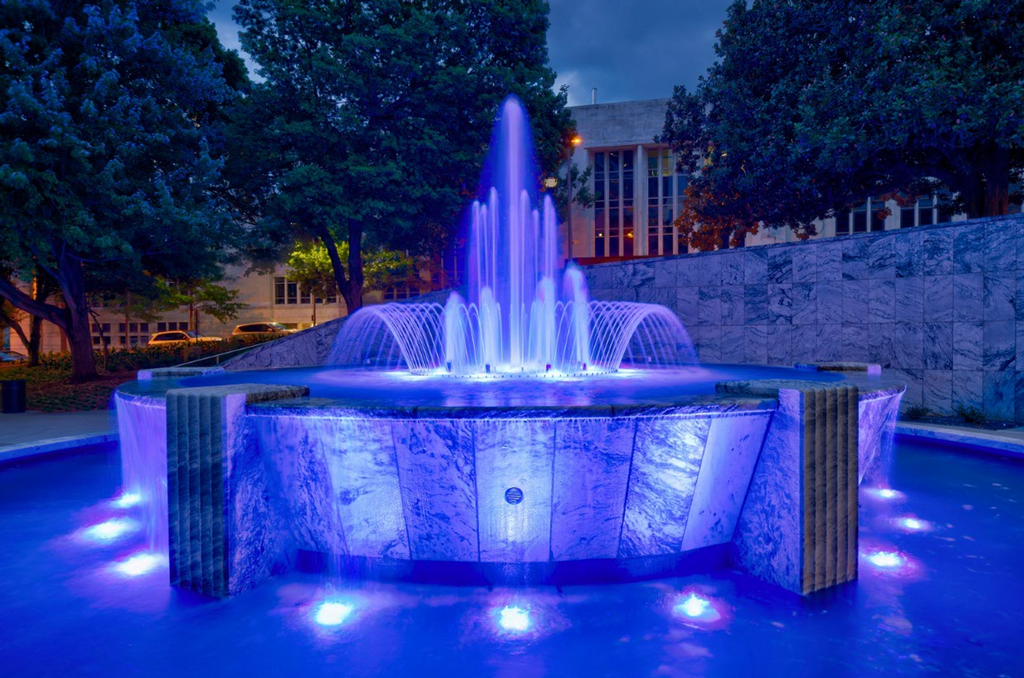Renovating a Georgia Classic
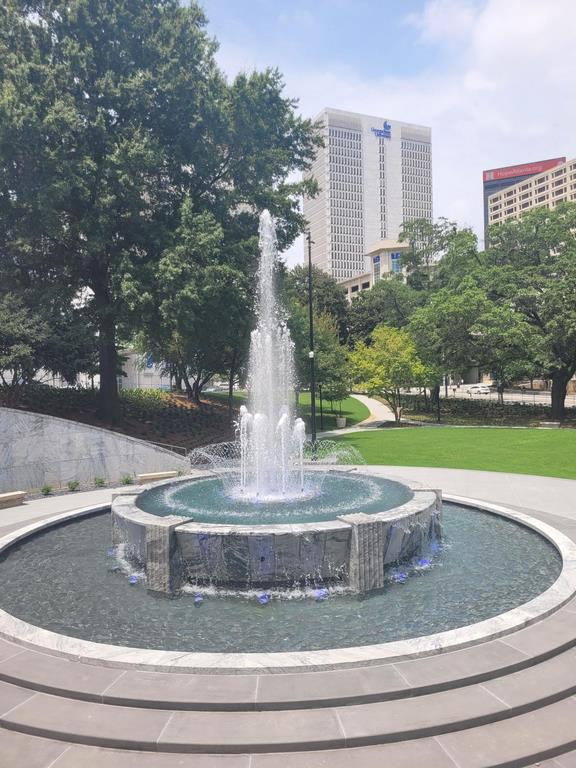
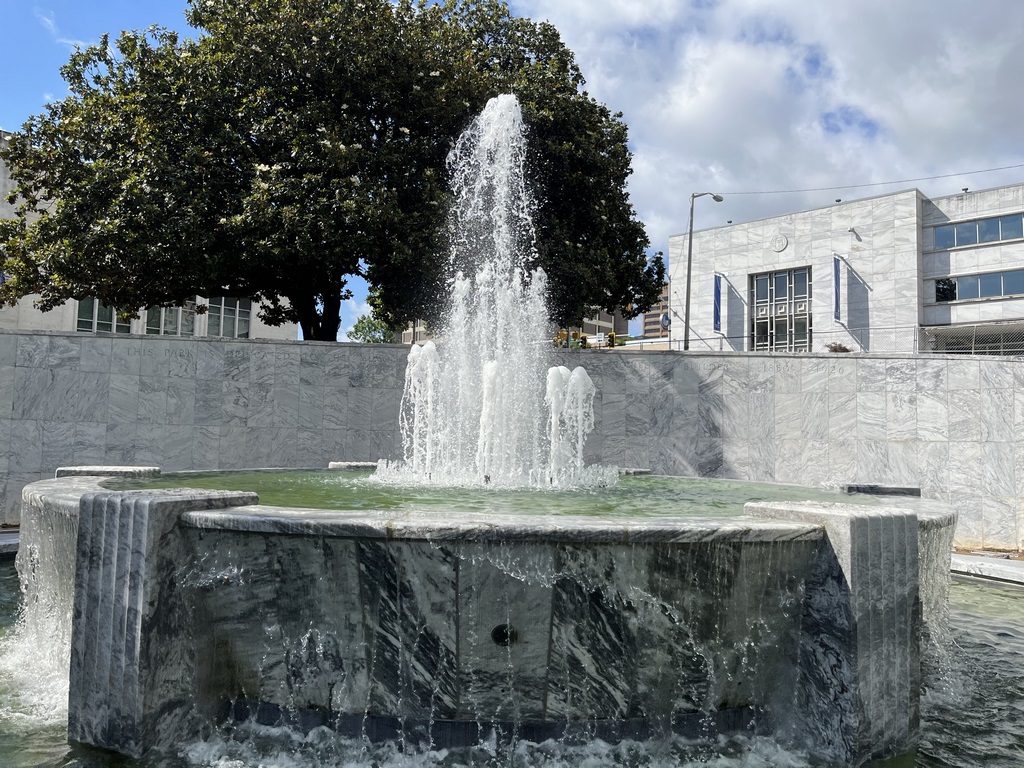
Atlanta’s Hurt Park and its iconic fountain have been fixtures in the city’s downtown for more than eight decades. Time had taken its toll and the site underwent an extensive recently completed renovation, including a full-scale fountain renovation by Fountain People.
By Bryan Had
It’s always both a pleasure and a challenge when working on historic sites. That was certainly the case with the fountain at Hurt Park in Atlanta. The vintage fountain and surrounding park, which are located adjacent to the Georgia State University campus, were badly in need of a complete renovation.
Fortunately, the city and university were committed to recreating this beautiful urban space and recapturing the fountain’s original magic. Those of at Fountain People were proud to work on a great project team that carefully undertook the effort using modern technology and construction methods to express the original design intent.
The project may not have been a complex as others we take on, but it was nonetheless a great example of harmonizing the past with the needs of today and the future.
PARK PEDIGREE
Hurt Park opened in 1940. At the time, it was the city’s first new downtown park since the 1860s. It was part of an urban renewal push between 1937 and 1942, when the city transformed its ageing municipal auditorium and the surrounding area into a civic center that reflected Atlanta’s rising status as a convention destination and overall center of commerce.
The park was named after Joel Hurt, one of the most influential figures in Atlanta in the late 19th and early 20th centuries. Born at Hurtsboro, Alabama, southwest of Columbus, Georgia, in 1850, Hurt was originally trained as a civil engineer and spent the early 1870s surveying for new railroad lines in the West.
By the mid-1870s, Hurt found himself in Atlanta working plantations owned by his family, which would serve as his platform as a leading entrepreneur and developer.
Hurt Park was adjacent to the Atlanta Civic Center, where it would serve as the center’s forecourt for thirty years, until the present Civic Center was created north of downtown in 1968.
Funded in part by the Woodruff Foundation and planned in part by the WPA, Hurt Park and its fountain were designed by the noted landscape architect William C. Pauley, and were among downtown Atlanta’s most popular attractions throughout the 1940s and 1950s.
Hurt Park was one of only a handful of important construction projects in downtown Atlanta during the Great Depression, and it remains one of the City’s most important landmarks from the period between the two World Wars.
FOUNTAIN FACTS
The fountain was built in 1945 and has served as popular gathering spot in the heart of the city ever since. But over the past 10 years it had fallen into disrepair. Not only did the fountain mechanics no longer function, but the plantings around the fountain were filled with litter and the park was an eye-sore that no longer attracted visitors.
It was a sad relic of the past and one not befitting the high-profile locations.
Because of its location, both the city of Atlanta and the University had an interest in bringing the fountain back to its former glory. The landscape architecture firm of HGOR worked closely with Georgia State University and our company to both restore the water feature structure, redesign its perimeter and replace the mechanical and electrical equipment in order to get the fountain back in working order.
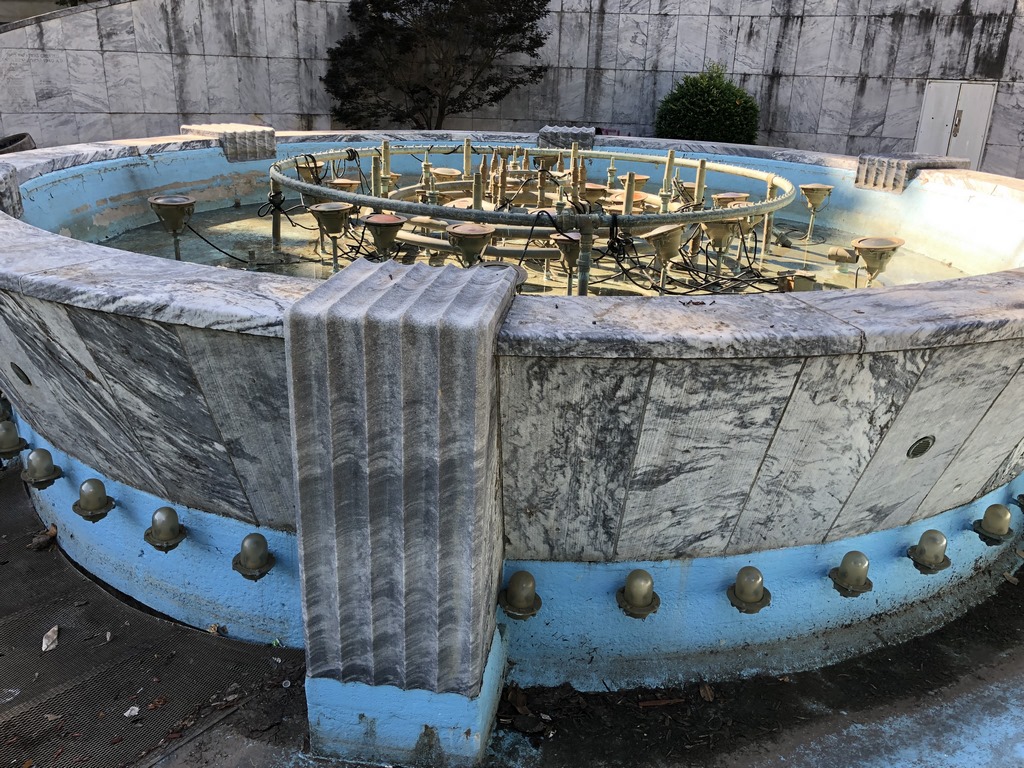
We received a call from the HGOR in Aug of 2019 describing the project and asking us to figure out what it would take to resurrect it the venerable water feature. Of course, we were excited to help.
Renovations of this type are difficult because you must work with existing plumbing penetrations and often compromised structures, but fortunately that is where our company excels. It takes a bit of homework to remain true to original design intent, while bringing the systems up to current standards.
Our main challenge with this renovation was to determine a piping and conduit plan that would utilize the existing structural penetrations, while maximizing flow rates, and then building the new spray rings & fountain jets to line up with the existing structure. It definitely took some coordination and multiple trips to the fountain as the nozzles and sprayers were being created.
There are three stainless steel spray rings along with a center jet that make up the fountain spray effecs: a 30-inch diameter ring with smoothbore jets, a five-foot spray ring with foam jets, a seven-foot spray ring with precision jets, and a center jet cluster that shoots 18 feet into the air, all custom fabricated. Additionally, there are 58 free standing, programmable multi-colored LED lights, adding an attention-grabbing visual after the sun goes down.
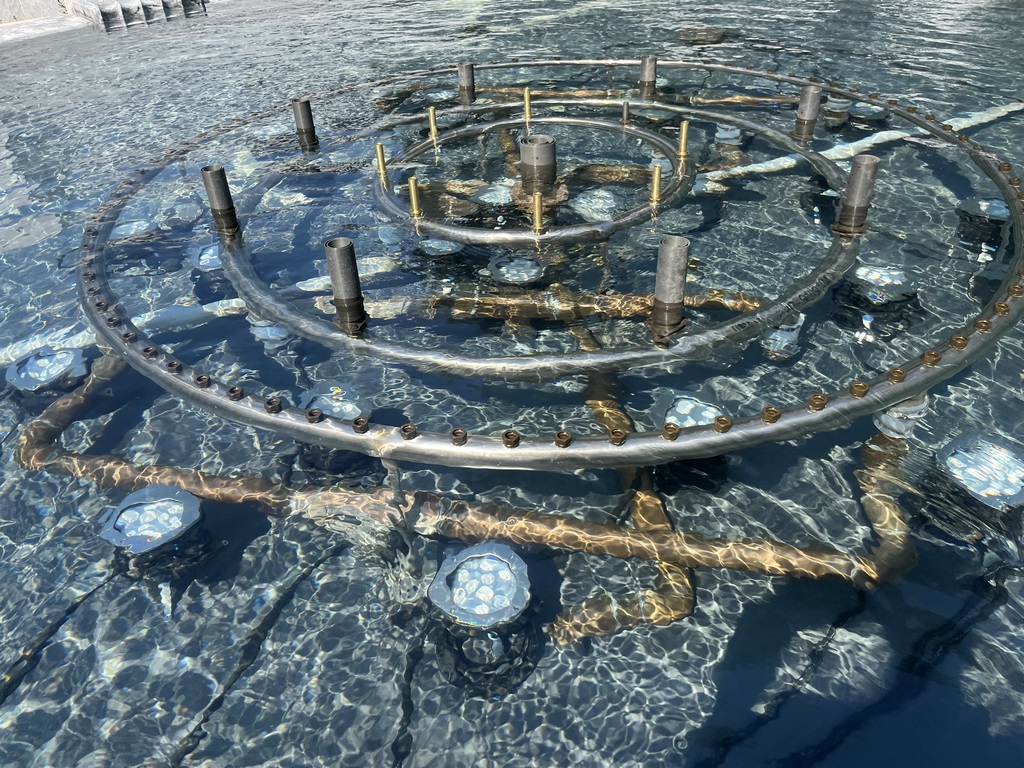
DOWN DEEP
The equipment room is located beneath the fountain structure, which is accessed by a narrow tunnel passageway. It contained inches of mud and had been flooding over the years with water from the sewer system. It was a disgusting toxic mess!
When I first visited the site, the park included dead rats and fecal matter, and the air in the equipment room was musty and stale. It was hard to breath in the cramped equipment room. Before I went down into vault, a maintenance personnel handed me a pipe to clear cobwebs and told me in all seriousness not to panic if I found a homeless person or even a body.
That was how the project started. The first step was for the university to clean out all the mud and sludge from under the fountain and to fix whatever kept causing the equipment room to be flooded by sewer water.
Then we went through the entire system and started examining all the penetrations going into the equipment room and ceiling. Everything had to be trashed. All the pumps and other equipment had to be replaced and a fresh air recirculation system needed to be installed as well.
The clients wanted to replicate the original fountain spray effect as much as possible, but it didn’t have to be an exact historical restoration replication of the fountain. This meant we could include new upgrades such as the LED lighting with color changing capability. The new spray rings were fabricated of stainless steel with new brass nozzles shooting vertical and arching water to create an updated version of the classic effect.
(The project was put on hold during the pandemic and was finally completed this summer.)
A PARK PLACE
The landscape architect and general contractor worked together to modify the landscape design. The rework involved replacing the original planting area, which had turned into a rat-infested thicket, with large steps that encircled the entire fountain, making it more approachable by the public and providing more seating for visitors to enjoy the cooling spray and sounds of the cascading water.
Away from the fountain, the entire triangular park was completely re-done. Pathways were rebuilt in their original configuration all the necessary ADA compliances, with the addition of a soft amphitheater with a small stage, meaning the park can now be used as a small performance venue.
All the landscape had also fallen into disheveled disrepair, as well. Not only was it unsightly, visibility was terrible preventing visitors from looking in or out of the park. The new softscape design and elevated canopies allow for generous sight lines, while still providing a bucolic setting, all with the fountain as the focal point.
Bringing back one of the oldest urban parks in Atlanta to being a safe and clean environment is a win-win for the City of Atlanta as well for Georgia State and their students. Atlanta has changed so much over the past 10 years with open spaces for the community and this is definitely a part of this urban revitalization.
The park’s grand re-opening took place on Aug 22nd with a host of city and university officials and local residents. The project drew praise for recapturing a beautiful part of the city’s past.
Bryan Had is regional sales manager/engineer for Fountain People, a commercial fountain manufacturing and design firm located in San Marcos, TX.











